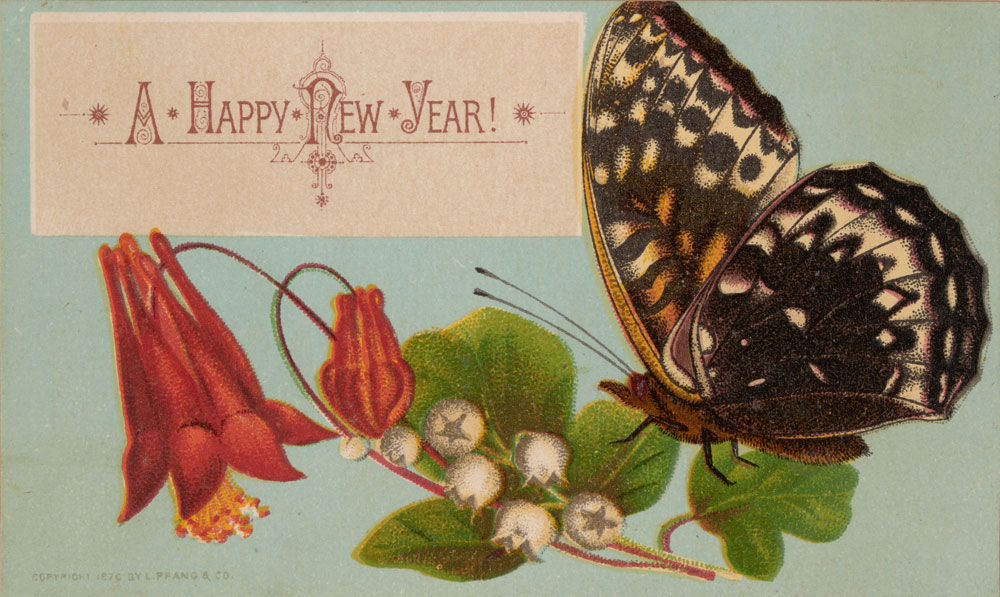
Greeting card, 2.5 x 4 in., chromolithographed by Louis Prang & Co., Boston, 1876. Jay T. Last Collection. | The Huntington Library, Art Museum, and Botanical Gardens.
Even in this era of pervasive digital media, people still enjoy connecting with each other using the tried-and-true analog method of a greeting card. According to the Greeting Card Association, more than 6 billion cards are purchased annually in the United States, and the Huntington Store sells thousands throughout the year. The custom of using an eye-catching vehicle to convey good wishes is a time-honored tradition, one exceptional chapter of which can be found in The Huntington’s archives.
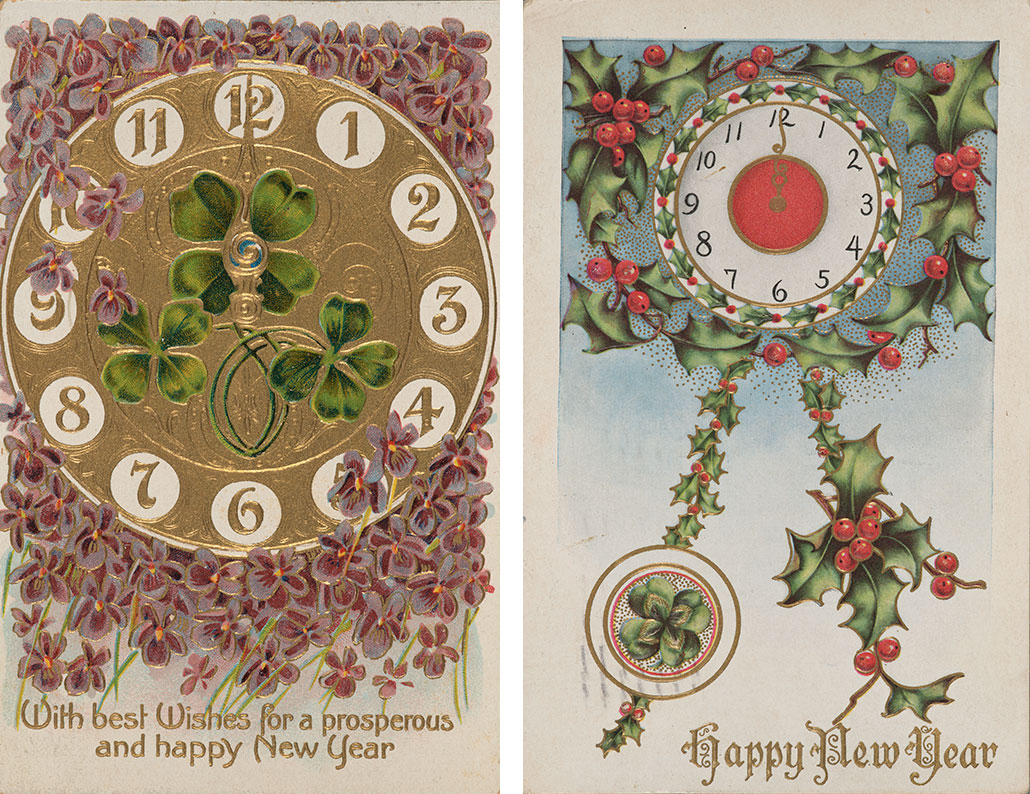
Postcards, 5.5 x 3.5 in. each, chromolithographed and embossed in Germany, ca. 1910. Jay T. Last Collection. | The Huntington Library, Art Museum, and Botanical Gardens.
Among the thousands of intriguing items in the Jay T. Last Collection of Graphic Arts and Social History is the Louis Prang Archive: more than 3,600 printed items ranging from advertisements and decorative posters to optical illusions, rebus puzzles, trade cards, and greeting cards—the majority of which were produced from 1860 to 1897. Prang (1824–1909) was not the first person to produce commercially printed greeting cards, but he helped create a year-round market for them and popularized winter holiday cards in the United States.

Visiting card, 2 x 3 in., lithographed by Louis Prang & Co., Boston, 1882. Jay T. Last Collection. | The Huntington Library, Art Museum, and Botanical Gardens.
Born in Breslau (now Wrocław, Poland), Prang apprenticed as a teen in his father’s fabric printing and dyeing factory. In 1850, Prang immigrated to Boston, where he worked as an engraver and a lithographer before founding his own printing company, which specialized in chromolithography. This commercial process for producing multicolor prints made it possible to generate large quantities of colorful images that were affordably priced. Prang’s huge selection of high-quality printed products appealed to a growing middle class who wanted art in their homes but found the fine art market out of reach. L. Prang & Company was quite successful, eventually opening offices across the United States and tapping into markets in Europe and Australia.
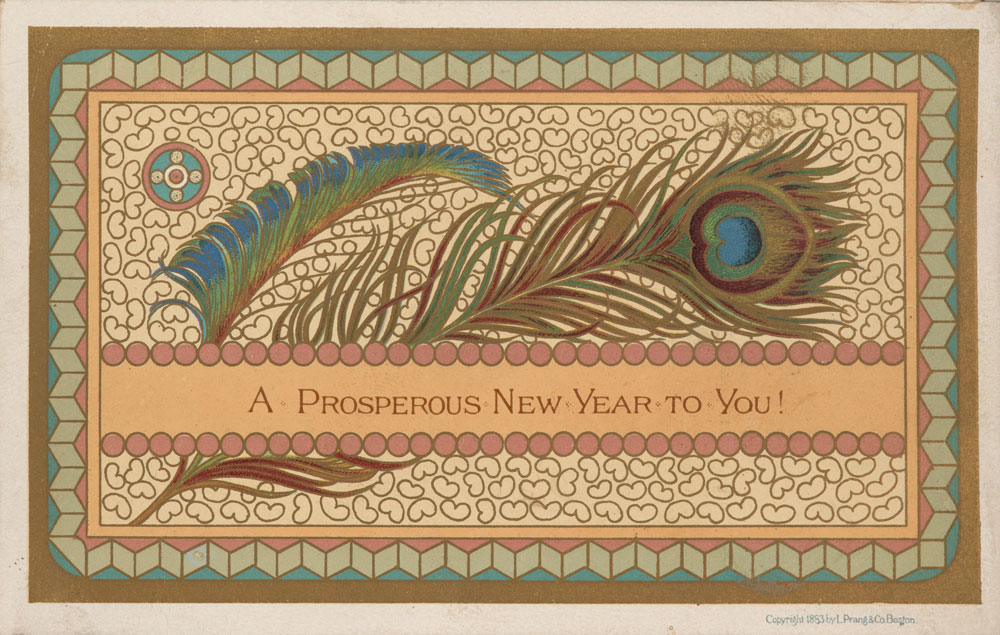
Greeting card, 3 x 5 in., chromolithographed by Louis Prang & Co., Boston, 1883. Jay T. Last Collection. | The Huntington Library, Art Museum, and Botanical Gardens.
The Huntington’s Prang archive includes three albums of sample products complete with stock numbers and prices. Looking much like the scrapbooks available at arts and crafts supply stores today, the albums consist of page after page of striking images created by the hundreds of artists, many of whom were women, employed by Prang. Picture cards feature lush illustrations of mosses, mushrooms, birds, and other natural wonders. A series of anthropomorphic animal caricatures evoke The Wind in the Willows, Kenneth Grahame’s classic 1908 novel. Greeting cards bearing warm wishes for winter holidays and prosperity in the years ahead are vibrant and varied. Some are finely embossed or die-cut; others are adorned with metallic embellishments or colorful fringes. Among the rustic landscapes, cavorting youngsters, and mischievous elves associated with the holiday season are images that seem to have crept in from nature collections—detailed flowers, foliage, butterflies … and even mollusks.
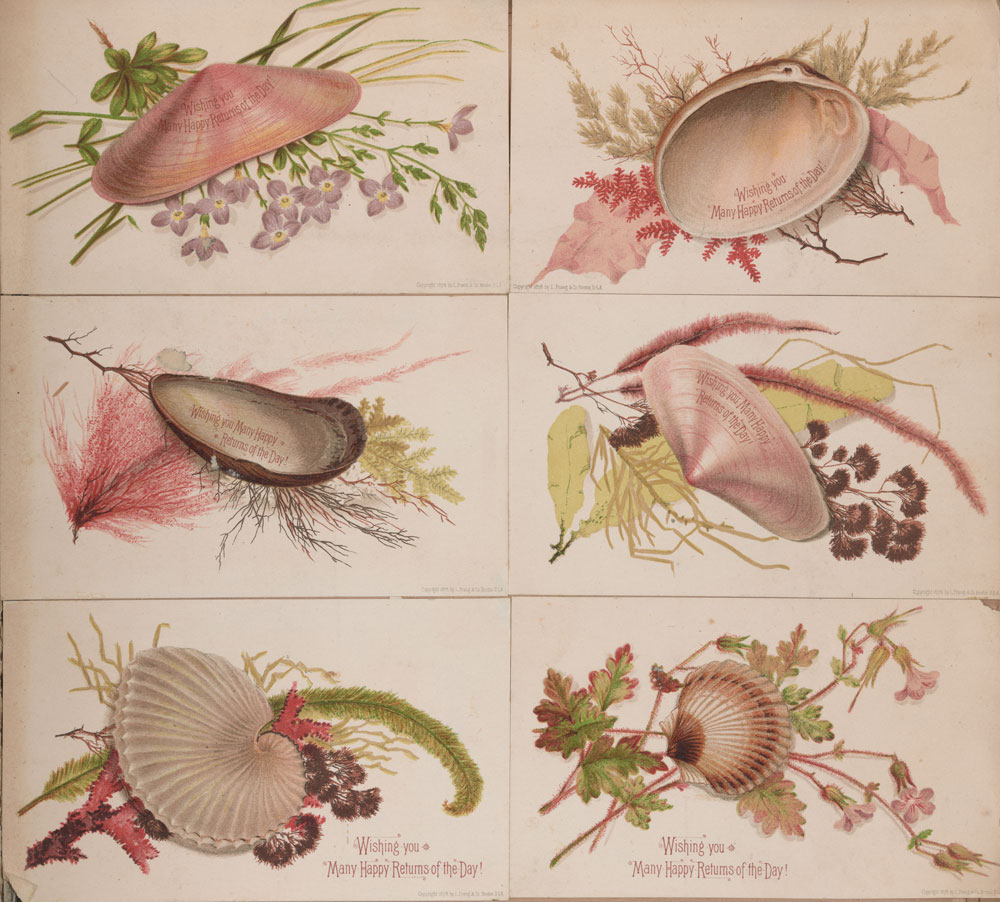
Greeting cards, 3 x 5 in. each, chromolithographed by Louis Prang & Co., Boston, 1878. Jay T. Last Collection. | The Huntington Library, Art Museum, and Botanical Gardens.
“This was a time when people were fascinated with scientific discoveries and natural history,” said David H. Mihaly, The Huntington’s Jay T. Last Curator of Graphic Arts and Social History. “It was also a time when color printing took off, and people became captivated by inexpensive color images that they could own, hold in their hands, and hang on their walls.”
More than a century after Prang’s cards were created, many hold a startlingly contemporary appeal. The beauty of nature, whimsical imagery, and fanciful characters from folklore still evoke delight, and wishes for joy and good fortune shared with loved ones certainly remain evergreen.
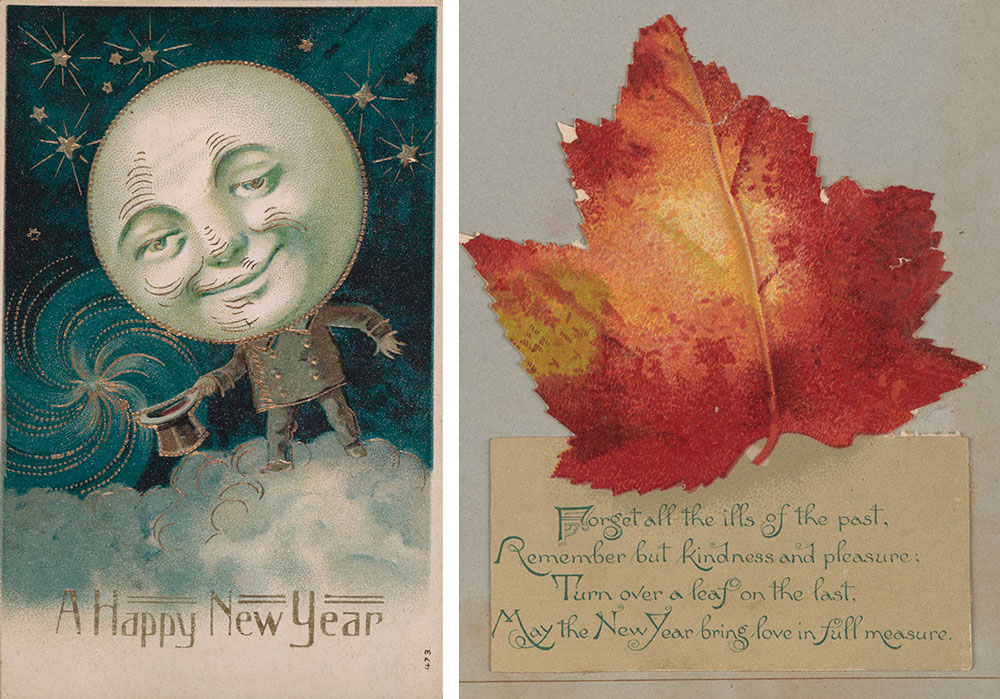
From left: Postcard, 5.5 x 3.5 in. Chromolithographed, gilded, and embossed in Germany, ca. 1910. Jay T. Last Collection. The Huntington Library, Art Museum, and Botanical Gardens. Greeting card, 4 x 3 in. Chromolithographed and die-cut by Louis Prang & Co., Boston, ca. 1880. Jay T. Last Collection. | The Huntington Library, Art Museum, and Botanical Gardens.
Sandy Masuo is the senior writer in the Office of Communications and Marketing at The Huntington.
